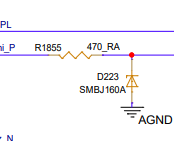Other Parts Discussed in Thread: ADS124S08
Tool/software:
Hi Team,
I’m planning to use the ADS124S08 ADC in our upcoming application. Could you please share the EVM design files for this device? Having access to the reference design would greatly help in completing our circuit development efficiently.
Additionally, I have a few technical queries and would appreciate your clarification:
-
Is it possible to use an external excitation supply for the RTDs?
-
I have 6 RTDs and 2 thermocouples in my system. I’m planning to interface them using a single ADS124S08 chip with an external analog multiplexer. Is this configuration acceptable?
-
Can the AVSS pin of the chip be connected to a negative voltage supply?
This is required because my input signal range is –125 mV to 250 mV.
Looking forward to your support.
Thanks & Regards,
Manikandan V


